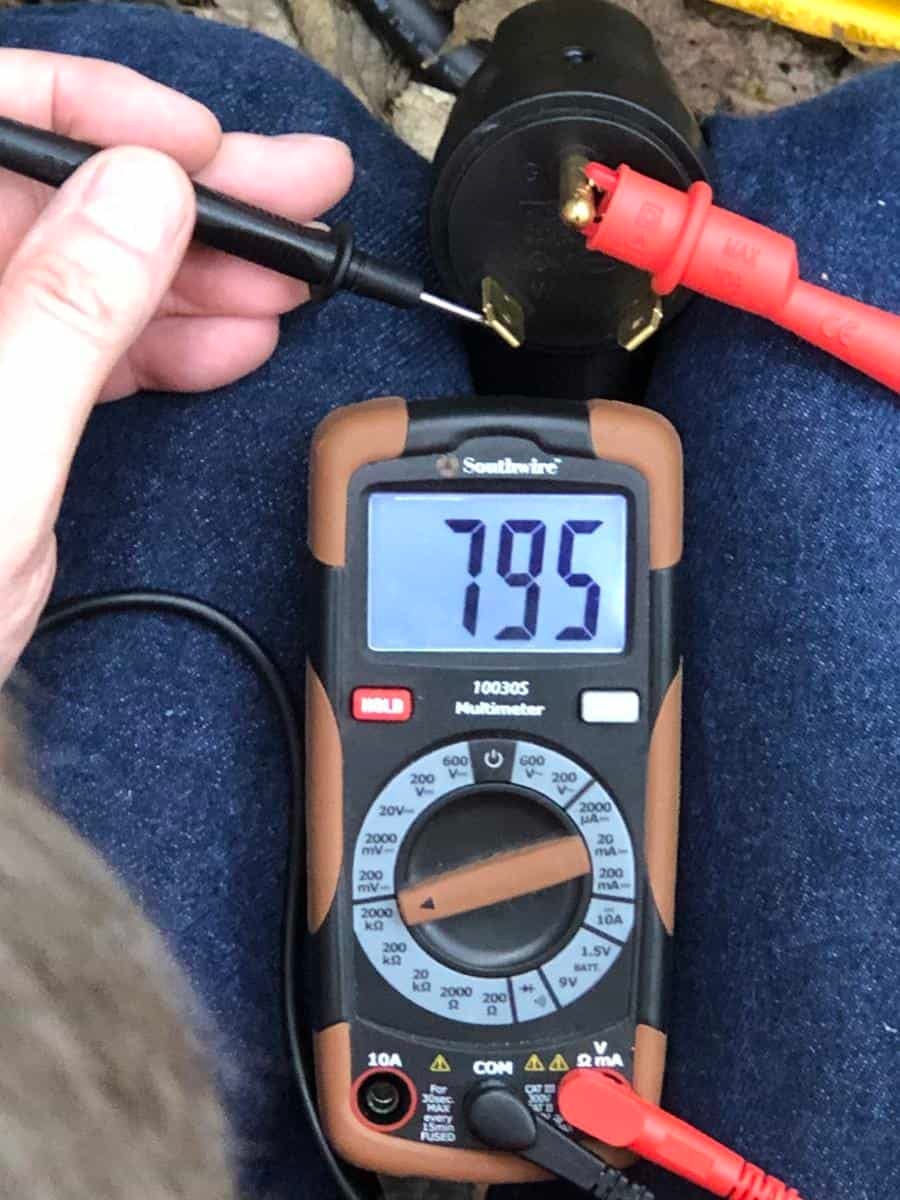Testing for a secondary neutral / ground bond
Here’s two more things that can cause GFCI nuisance tripping…
Hi Mike,
Was wondering if this was something you’d seen before? I am towing a new Airstream globetrotter (27FB, w/50A split phase input and onboard lithium and solar) with a GMC Sierra EV. When powering the truck with the L14-30 outlet in the bed (connected by an L14-30 to dogbone and then the 50A smartplug cable into the trailer), everything works fine (AC units, microwave, etc). But, when I try to plug in my laptop into any of the outlets (inverted or not), the GFCI breaker for those outlets immediately trips. If I try to plug in a nespresso coffee machine, 90% of the time or more, the coffee machine will go through self test and give me an error.
I’ve used a multimeter to confirm the truck outlet has a bonded neutral (continuity between neutral and ground, 120v on each phase). Not sure what else to do here? Is this something you’ve seen before? Note that the inverted outlets work fine when running those devices (laptop and coffee machine) off batteries while truck is unplugged.
Thanks - Dan
Hey Dan,
Two possibilities I can think of. Either the ground and neutral conductors in the GFCI branch circuit have been swapped, or there’s a ground to neutral short circuit. Either will cause instant GFCI tripping when you plug in any kind of load.
Let’s cover ground to neutral short circuits today. I’ll post about reversed ground/neutral conductors next week.
What is it?
A ground to neutral short in your RV could cause an upstream GFCI to act like that. With your RV unplugged from shore power, you should test the resistance between the neutral and ground contacts on your shore power cord. It should measure at least 500,000 ohms.
Why does this happen?
The RV’s ground and neutral conductors must be isolated from each other. That is, there should not be a neutral/ground bonding screw inside of your RV’s power panel. The same goes for the campground or home pedestal itself – no bonding screw. If there is this secondary bond in the pedestal or RV, then load current that should flow only on the neutral is shared with the ground conductor. That causes an unbalanced hot/neutral current, which trips GFCI breakers.
How to test for this condition
To test for this RV double-bond, unplug your shore power cord from the pedestal and leave it connected to the RV. Then setting your digital meter on the highest resistance/ohms scale, measure the resistance between the ground pin and the neutral blade on the plug. For a 30-amp male plug it’s a little tricky, so here’s a picture. For a 50-amp plug, this us pretty obvious since it’s the blade directly below the grounding pin.
The test should measure nearly off the scale with hundreds of thousands of ohms resistance. Here you can see in this picture that it reads 795,000 Ohms (795 k-Ohms) from neutral to the ground pin on my RV, which is perfect.
If it measures a dead short of less than 1 ohm, then there’s a double-bonded neutral inside of your RV power center that must be corrected. You’ll probably be want to get a licensed electrician to sort this one out since there could be hazardous voltages involved.
Let’s play safe out there… Mike





Mike, The inverter that I am using to power the components in the RV has a ground wire that is connected from a lug on the inverter box and then is connected to the RV frame as is the ground for the 12 volt systems. Would this inverter ground connected to the RV frame create any sort of issues like this? Chuck